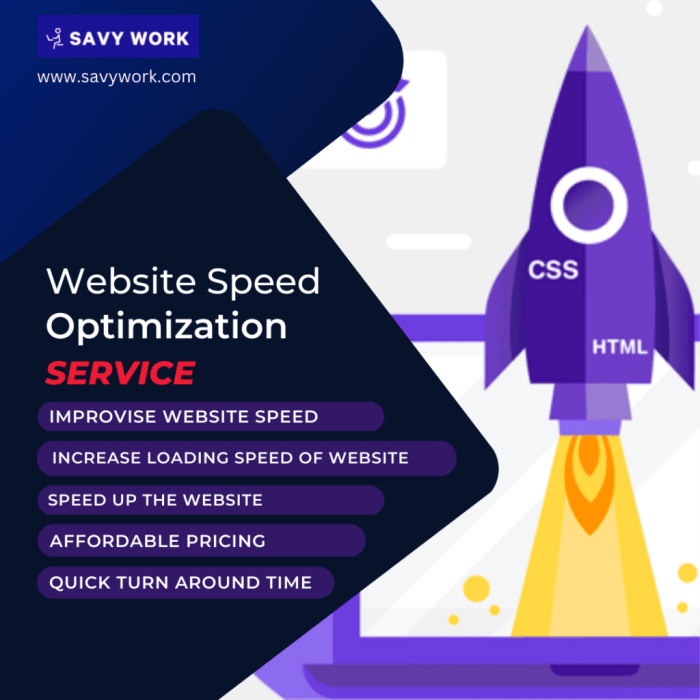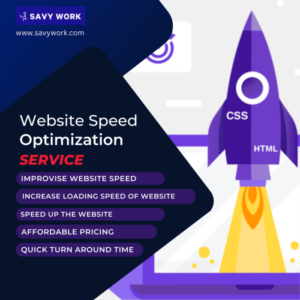
Speed optimization for web design is a crucial aspect that can significantly enhance user experience and improve overall site performance. In today’s fast-paced digital environment, where users expect instant access to information, ensuring your website loads quickly can make or break your online presence. This discussion will delve into effective strategies to optimize website speed, focusing on image compression, code minification, browser caching, and the broader implications on search engine marketing and web security.
We’ll explore how optimized web design not only boosts site speed but also enhances your visibility in search engine results, directly influencing your conversion rates. Additionally, we’ll touch upon the importance of secure coding practices that can maintain speed without compromising safety, creating a seamless and trustworthy browsing experience for users.
Speed Optimization Techniques for Web Design

In the fast-paced digital landscape, the speed of a website plays a crucial role in user experience and rankings. Effective speed optimization not only improves loading times but also enhances the overall usability of your site. Here, we’ll explore techniques that can significantly reduce load times while maintaining the quality and functionality of your web design.
Reducing Image Sizes Without Losing Quality
Images often make up the bulk of a webpage’s size, affecting load times. Implementing techniques to compress images without sacrificing quality is essential for optimization. Here are effective methods to achieve this:
- Utilize image formats wisely: Choose formats like WebP for modern browsers, which offers superior compression with quality retention compared to JPEG or PNG.
- Implement responsive images: Use the `srcset` attribute to serve different image sizes based on the user’s device, ensuring only the necessary resolution is loaded.
- Leverage compression tools: Tools like TinyPNG or ImageOptim can reduce file sizes significantly without visible quality loss. These tools use smart lossy compression techniques.
- Consider lazy loading: This technique delays the loading of off-screen images until a user scrolls to them, reducing the initial load time.
Minifying CSS, JavaScript, and HTML Files
Minification involves removing unnecessary characters from code without affecting functionality, which helps reduce file sizes and speeds up loading times. Here are strategies to effectively minify your web resources:
- Use build tools: Grunt, Gulp, or Webpack can automate the minification process during development, ensuring that production files are optimized.
- Online minification services: Websites like CSSNano and UglifyJS allow you to paste your code and receive a minified version easily.
- Consolidate files: Combine multiple CSS or JavaScript files into a single file to reduce HTTP requests, which can significantly improve load times.
- Employ Content Delivery Networks (CDN): CDNs can serve minified and cached versions of your files, speeding up access for users worldwide.
Utilizing Browser Caching
Browser caching is a technique that stores certain resources on a user’s device after the first visit, reducing the need to reload them on subsequent visits. This can greatly enhance load times for returning users. Implementing browser caching correctly is vital:
- Set cache expiration: Use headers to specify how long resources should be cached, allowing browsers to reuse them rather than fetching them again.
- Leverage .htaccess or server configuration: Modify your server settings to enable caching for static resources like images, CSS, and JavaScript files.
- Implement versioning: Append version numbers to your file names to ensure that users always receive the latest files when changes are made.
- Use tools for testing: Google PageSpeed Insights and GTmetrix can help analyze caching practices and recommend improvements.
Impact of Speed on Search Engine Marketing
In the fast-paced world of digital marketing, the speed at which a website loads can significantly influence its success, particularly in search engine marketing (SEM). A slow-loading site can detract from user experience and diminish the effectiveness of paid ads, leading to lower performance metrics. This section delves into how website speed impacts ad performance, as well as the crucial metrics that link page load speed with conversion rates.
Website Speed and Ad Performance
Website speed directly influences user engagement and conversion outcomes in SEM campaigns. When users click on ads, they expect a seamless transition to the landing page. If the page takes longer than three seconds to load, research indicates that approximately 40% of users will abandon it. This abandonment not only affects immediate traffic but also impacts the cost-effectiveness of the ad campaign because advertisers are paying for clicks that don’t lead to conversions.Key metrics that connect page load speed with conversion rates include:
- Click-Through Rate (CTR): Slower landing pages can lead to lower CTR, as users are less likely to engage with ads when they anticipate slow loading times.
- Conversion Rate: Studies reveal that a one-second delay in page load time can decrease conversion rates by up to 20%.
- Bounce Rate: Higher bounce rates often correlate with slower loading times, indicating that users leave the site before it fully loads.
These metrics illustrate the critical relationship between speed and performance, emphasizing the need for marketers to prioritize website optimization.
Optimizing Landing Pages for Faster Loading
Enhancing the speed of landing pages is essential for maximizing the effectiveness of SEM campaigns. A well-optimized landing page not only improves loading times but also ensures that users have a positive experience, thus increasing the likelihood of conversions. To optimize landing pages efficiently, consider the following strategies:
- Image Compression: Large image files can significantly slow down load times. Use compressed formats like WebP or JPEG and ensure that images are appropriately sized for web display.
- Minification of CSS and JavaScript: Reducing the file size of CSS and JavaScript by removing unnecessary characters can result in faster load times without compromising functionality.
- Utilizing Content Delivery Networks (CDNs): CDNs distribute content across various locations, enabling quicker access for users, which can reduce load times significantly.
- Implementing Lazy Loading: This technique loads images and videos only when they are in the user’s viewport, leading to quicker initial page loading times.
Each of these strategies contributes to a more efficient landing page, ultimately enhancing the performance of SEM efforts.
“The faster your landing page loads, the more likely visitors are to convert. Speed is not just a technical requirement; it’s a foundational element of user experience.”
The Role of Web Design in Internet Security

In an increasingly digital world, the intersection of web design and internet security has become crucial. Effective web design not only enhances user experience but also addresses security vulnerabilities that could jeopardize both user data and site integrity. Well-implemented secure coding practices can significantly enhance security while maintaining optimal website performance.Secure coding practices involve a set of guidelines and methodologies aimed at developing software that is resistant to attacks.
These practices include input validation, output encoding, and proper authentication methods. By integrating these principles into the web design process, developers can prevent common vulnerabilities such as SQL injection, cross-site scripting (XSS), and cross-site request forgery (CSRF). For instance, using parameterized queries when interacting with databases ensures that user inputs are treated as data rather than executable code, which enhances both security and performance by reducing the load on server resources that would otherwise handle potential attacks.
Impact of Speed on User Trust in Security Features
The perceived speed of a website can directly influence user trust, particularly concerning the security features in place. Users tend to associate fast-loading sites with reliability and professionalism, while slow sites may raise suspicions about their safety and integrity. If security features, such as SSL certificates, take too long to load or impact overall performance, users might hesitate to share sensitive information.A study conducted by Google indicates that as page load time increases from one second to ten seconds, the probability of a visitor bouncing increases by 123%.
This metric highlights how essential speed is in retaining users, who may otherwise seek alternatives that offer both security and efficiency. Additionally, visible security indicators, like a padlock icon, can heighten user confidence when combined with swift page loading times, leading to higher conversion rates.To effectively safeguard a website while maintaining performance, website owners can utilize various security plugins and tools that are designed to streamline processes without compromising speed.
Security Plugins and Tools for Performance Maintenance
Employing the right security tools can significantly enhance a website’s defenses while ensuring that it operates smoothly. Here’s a list of notable security plugins that help maintain speed while protecting the site:
- Wordfence: This comprehensive security plugin not only offers firewall protection and malware scanning but is optimized to minimize performance impact.
- Sucuri Security: Sucuri provides a suite of security features, including monitoring and malware cleanup, with minimal effect on site speed.
- iThemes Security: Focused on securing WordPress sites, this plugin enhances security through effective measures while keeping performance intact.
- Cloudflare: Acting as a CDN and security layer, Cloudflare improves site speed through caching and DDoS protection without degrading speed.
- MalCare: This plugin performs deep scanning and offers one-click malware removal with a lightweight footprint that doesn’t slow down your site.
Utilizing these tools not only fortifies a website against potential threats but also contributes to a seamless user experience, proving that security and speed can go hand in hand in modern web design.
Final Review
In summary, mastering speed optimization for web design is vital for anyone looking to improve their website’s performance and user satisfaction. By implementing techniques like image size reduction, code minification, and effective caching strategies, you not only enhance loading times but also positively impact your marketing efforts and security measures. Ultimately, a well-optimized website fosters trust and engagement, driving better results for your online business.
FAQ
What are some tools for optimizing website speed?
Tools like Google PageSpeed Insights, GTmetrix, and Pingdom can help analyze your site’s speed and offer suggestions for improvement.
How does image size affect website loading speed?
Large images can significantly slow down your website. Optimizing them reduces file size without sacrificing quality, thus speeding up load times.
Can speed optimization improve my ranking?
Yes, search engines prioritize fast-loading websites in their rankings, so improving speed can lead to better visibility and higher traffic.
Is it necessary to use a Content Delivery Network (CDN) for speed optimization?
While not mandatory, using a CDN can greatly enhance your site’s speed by delivering content from servers closer to the user.
How often should I check my website’s speed?
It’s a good practice to check your website’s speed regularly, especially after making significant updates or changes to your site.





